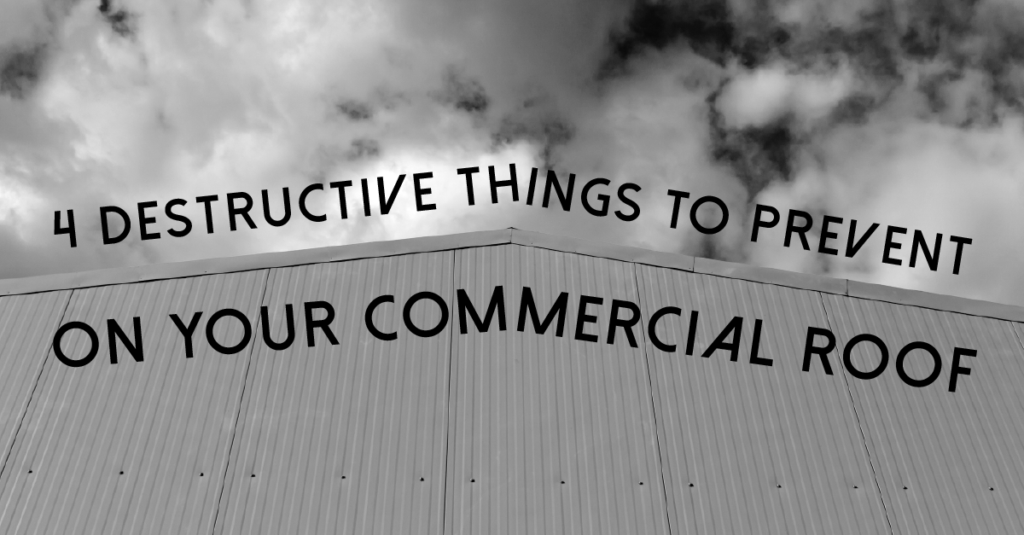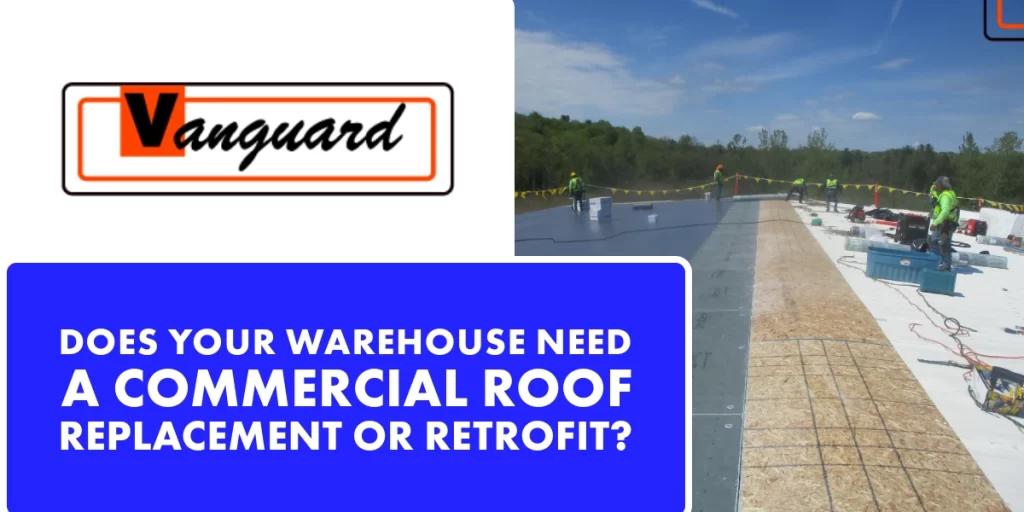Your commercial roof sits fully exposed to a daily onslaught of Mother Nature’s destructive forces. To get the greatest possible ROI on your roof asset and protect your building and its contents, it’s vital to be aware of developing issues and have your commercial roofing professional tackle maintenance and repairs as needed. Here are four types of destruction to stay vigilant against:
Flashing Damage
Deteriorated flashings are weak points that give rainwater an easy entry route into your roof. Some of the flashed areas susceptible to failure are around the perimeter, parapets, expansion joints and sheet metal configurations. Any corroded, bent, loose or missing sections of flashing noted during an inspection should be corrected promptly so the membrane doesn’t billow or tear in high winds, and water doesn’t infiltrate the roof system or the building’s interior.
Penetration Seal Deterioration
Your commercial roof probably has various penetrations through the roof membrane for vents, pipes, equipment installations or skylights. Damage and defects around penetration pitch pans, rain collars, pipe boots and field wraps need to be noted and addressed as soon as possible to keep water out of the roof system.
Drainage Issues
Issues with your roof’s drainage system, like flaws in the internal drain seals, or clogged drains, scuppers or downspouts can result in areas of ponding water on the roof after a rain or when snow is melting. If this happens repeatedly, the membrane can start to degrade and become more susceptible to leaks. The added weight can compress the roof layers and weaken the structure. Any deficiencies in the drainage system need to be investigated and dealt with without delay to avoid ruined insulation, decking and structural component decay, and interior water damage and mold growth.
Roof Field Degradation
A large, exposed roof field has many areas that are particularly vulnerable to deterioration. This makes it essential to inspect for issues that need attention, like tears/punctures in the membrane due to foot traffic or debris, bubbling/blistering caused by moisture retained between the layers, and seam and lap separations resulting from failed adhesion or from wear and tear. To keep any damage from escalating, a roofer who’s experienced working with your particular type of system needs to find and correct underlying issues, and then make sound repairs.
If you’re in need of expert commercial roofing services to keep your Amherst property in superb condition, contact us at Vanguard Roofing.



